Not-so Lazy Days of Summer
 Sunday, July 4, 2010 at 02:15PM
Sunday, July 4, 2010 at 02:15PM Now that summer is baking the Northern Hemisphere once more, many of us will engage in a wide variety of traditional summertime activities. There are backyard barbecues and graduations to attend, weddings to celebrate, lawns to mow, home repairs to undertake, mosquitoes to repel, sports to play, oceans and pools to swim in, trips to take, and hammocks in which to rest. The events are endless, come rain or shine. So too, within the summer season, nature has its vast array of activities.
What takes place in nature while we are busy with our summer plans is amazing. Even on the most tranquil of lazy summer days, nature is vigorously engaged in birth and death, growth and decay, playing and hunting, eating and being eaten. From the Sun’s imperceptible movement across cerulean blue skies, to the beating of a billion tiny hearts in fields, woodlands, and wetlands, nature is always in motion.
Summer is the time when nature is at its peak of the growth stage. It is when most plants will have completed flowering, pollinating, and fruiting for the year. Leaves have grown big and green, and the associations between insects and plants are in play – like tourists and vacation hot spots!
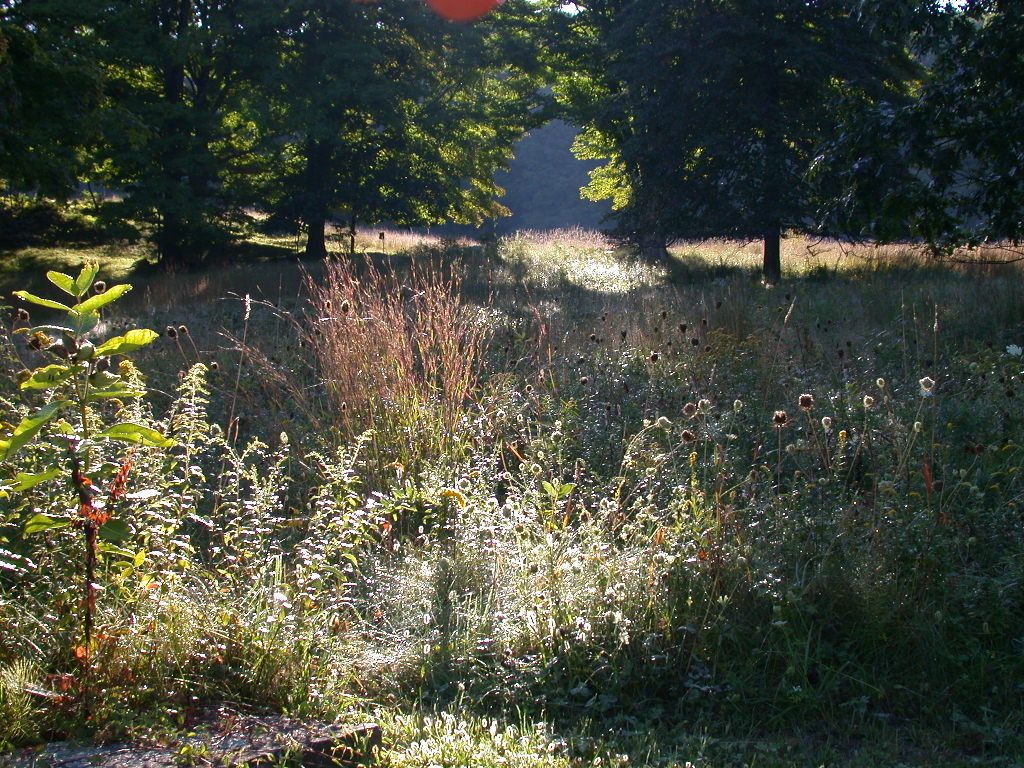 Woody plants produce wood cells called lignin, and it is in summer when trees add their growth ring for the year– an important summertime activity in nature that goes unobserved by us. The unique leaf shapes and sizes that every tree and plant species have are shining examples of energy-efficient design maximizing the collection of sunlight. As you watch the leaves gently swaying in the warm summer breeze, think of the microscopic chlorophyll-containing chloroplasts within each leaf continuously capturing and converting sunlight into sugar molecules for food. The maple syrup you pour on pancakes on cold, late winter mornings gets its start right here in the heat of summer.
Woody plants produce wood cells called lignin, and it is in summer when trees add their growth ring for the year– an important summertime activity in nature that goes unobserved by us. The unique leaf shapes and sizes that every tree and plant species have are shining examples of energy-efficient design maximizing the collection of sunlight. As you watch the leaves gently swaying in the warm summer breeze, think of the microscopic chlorophyll-containing chloroplasts within each leaf continuously capturing and converting sunlight into sugar molecules for food. The maple syrup you pour on pancakes on cold, late winter mornings gets its start right here in the heat of summer.
Trees provide a direct and indirect source of wildlife food, as well as habitat for many species of insects, birds and mammals. Some insects eat leaves, bark, and wood, while in turn, other insects feed on these plant-eating insects. Many birds, of course, will eat both groups of insects. All of this goes on right above your heads as you and your family enjoy a picnic in the shade of an old sugar maple.
Playgrounds and Battlefields
Perhaps the most observable natural event of July, August, and September is the flowering of hundreds of species of plants. When you look out upon gorgeous, sunlit meadows you will see a special beauty. Many species of tall grasses, flowers, and shrubs combine their unique colors to paint portraits of unrestrained splendor. If you look a little closer, you might notice the dragonflies, grasshoppers, butterflies and bluebirds stitching earth and sky together. It is surely an idyllic scene, it seems, and a delight for us to behold.
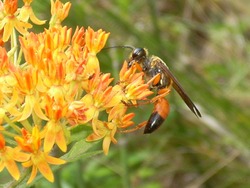 Great Golden Digger wasp (Sphex ichneumoneus) on Butterfly weed (Pleurisy Root) - an orange flowered species in the milkweed family. This adult wasp is eating nectar. This species digs a vertical hole in the soil and then builds larval chambers radiating outward from the column. In these chambers are the developing larvae whose food is some sort of paralyzed – yet still living insect, such as a cricket, katydid, or caterpillar. The female captures the insect, paralyzing it, carrying it into the chamber and then deposits one egg on the captured insect. The larvae grows as it feeds on the living insect.
Great Golden Digger wasp (Sphex ichneumoneus) on Butterfly weed (Pleurisy Root) - an orange flowered species in the milkweed family. This adult wasp is eating nectar. This species digs a vertical hole in the soil and then builds larval chambers radiating outward from the column. In these chambers are the developing larvae whose food is some sort of paralyzed – yet still living insect, such as a cricket, katydid, or caterpillar. The female captures the insect, paralyzing it, carrying it into the chamber and then deposits one egg on the captured insect. The larvae grows as it feeds on the living insect.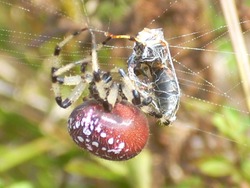 This Shamrock Spider (Araneus Trifolium) is a member of the Orb-weaver genus of spiders. Females, such as this one, are vastly larger than the males of the same species. Orb-weavers build a new web each night, after consuming the previously used silk. The webs are made of sticky and non-sticky silk, with the sticky capture silk in the center. Often in the center of the web, the spider weaves a zig-zagging patch of silk. This may help hide the overall web from flying insects or it may deter birds from crashing through the web, though at present the function is still a mystery. At least to us humans.Moving closer and closer to this beautiful tapestry, however, we begin to see that which makes up the beauty beheld from a distance. If we zoom in on plants such as milkweed, yarrow, or asters, you'll see them as a hub of intense activity. Bumble Bees, Honey Bees, ants, wasps, and several species of butterflies are doing what each needs to do to survive and reproduce. You might see small flies stuck in flowers struggling to escape before a perfectly camouflaged crab spider pounces on them from its hiding place deep within the petals. With a flash of cellophane wings, the predatory dragonflies, Yellow-Jackets, and hairy Black Tachinid flies patrol the vicinity ready to carry off unfortunate insects that have come to sip nectar, eat pollen, or munch leaves. As for the plants themselves, they are reliant on pollination by insects and offer sweet nectar in exchange for this service. Yet plants must also endure being consumed by other insects and mammals alike, or risk having their nectar robbed by nectar thieves (like ants that steal nectar without carrying pollen to other, distant plants). Some plants defend themselves from the inevitable end with toxic alkaloids and spiny or hairy leaves and stems. Up close, this beautiful field is also a battleground for survival. It is nature as it is designed to be, and within this circle of creation and destruction, there is drama, beauty, and balance. Each species expresses its life with a passion, and this offers up the beauty we enjoy from a distance on our way to summer destinations and family gatherings.
This Shamrock Spider (Araneus Trifolium) is a member of the Orb-weaver genus of spiders. Females, such as this one, are vastly larger than the males of the same species. Orb-weavers build a new web each night, after consuming the previously used silk. The webs are made of sticky and non-sticky silk, with the sticky capture silk in the center. Often in the center of the web, the spider weaves a zig-zagging patch of silk. This may help hide the overall web from flying insects or it may deter birds from crashing through the web, though at present the function is still a mystery. At least to us humans.Moving closer and closer to this beautiful tapestry, however, we begin to see that which makes up the beauty beheld from a distance. If we zoom in on plants such as milkweed, yarrow, or asters, you'll see them as a hub of intense activity. Bumble Bees, Honey Bees, ants, wasps, and several species of butterflies are doing what each needs to do to survive and reproduce. You might see small flies stuck in flowers struggling to escape before a perfectly camouflaged crab spider pounces on them from its hiding place deep within the petals. With a flash of cellophane wings, the predatory dragonflies, Yellow-Jackets, and hairy Black Tachinid flies patrol the vicinity ready to carry off unfortunate insects that have come to sip nectar, eat pollen, or munch leaves. As for the plants themselves, they are reliant on pollination by insects and offer sweet nectar in exchange for this service. Yet plants must also endure being consumed by other insects and mammals alike, or risk having their nectar robbed by nectar thieves (like ants that steal nectar without carrying pollen to other, distant plants). Some plants defend themselves from the inevitable end with toxic alkaloids and spiny or hairy leaves and stems. Up close, this beautiful field is also a battleground for survival. It is nature as it is designed to be, and within this circle of creation and destruction, there is drama, beauty, and balance. Each species expresses its life with a passion, and this offers up the beauty we enjoy from a distance on our way to summer destinations and family gatherings.
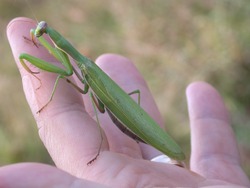 Praying Mantis are abundant in fields and meadows, though are masters of invisibility and stalking and so are not often encountered. They sway with the vegetation in even the slightest puff of wind and match the movement of the plants they are on. In late fall, or early winter, you can walk through these fields and look for Praying Mantis egg cases that are attached to stalks of goldenrods and other sturdy plants. In spring, the minute mantises issue forth from the egg case by the hundreds. They eat each other and whatever small insect they can catch. They molt as they grow into the adult size shown here.Hiking into the cool forests and woodlands we find a different strategy for survival. In contrast to plants of the open fields, woodland plants such as Bloodroot, Wood Anemone, Trout-lily, and Spring Beauty are done flowering by late spring. Once the forest canopy closes with the unfurling of new leaves, sunlight reaching the forest floor is at a minimum, so these species get their business done early. Competition for survival in the open field or meadow is more intense. Much energy is available in the open, and much energy is expended for survival, reproduction and vigorous growth. The open field is an unstable habitat because plant populations ebb and flow, and often the species that grabs the most territory wins. The forest is a relatively stable habitat, and so plant energy expenditures are generally focused on adding plant tissue and digging into the earth to help ensure root, corm, and tuber survival through the winter freeze. Since new growth comes from these below ground parts, much less energy is spent producing seeds for germination of a new plant.
Praying Mantis are abundant in fields and meadows, though are masters of invisibility and stalking and so are not often encountered. They sway with the vegetation in even the slightest puff of wind and match the movement of the plants they are on. In late fall, or early winter, you can walk through these fields and look for Praying Mantis egg cases that are attached to stalks of goldenrods and other sturdy plants. In spring, the minute mantises issue forth from the egg case by the hundreds. They eat each other and whatever small insect they can catch. They molt as they grow into the adult size shown here.Hiking into the cool forests and woodlands we find a different strategy for survival. In contrast to plants of the open fields, woodland plants such as Bloodroot, Wood Anemone, Trout-lily, and Spring Beauty are done flowering by late spring. Once the forest canopy closes with the unfurling of new leaves, sunlight reaching the forest floor is at a minimum, so these species get their business done early. Competition for survival in the open field or meadow is more intense. Much energy is available in the open, and much energy is expended for survival, reproduction and vigorous growth. The open field is an unstable habitat because plant populations ebb and flow, and often the species that grabs the most territory wins. The forest is a relatively stable habitat, and so plant energy expenditures are generally focused on adding plant tissue and digging into the earth to help ensure root, corm, and tuber survival through the winter freeze. Since new growth comes from these below ground parts, much less energy is spent producing seeds for germination of a new plant.
In summer, young squirrels can be seen in the forests displaying their amazing skills as they play. Spiraling at top speed chasing one another up and down tall trees and leaping from limb to limb. They are obviously enjoying themselves, yet they are also in survival training. Evading foxes, coyotes, hawks and other predators is serious business. Their wiles and dexterity are especially important for the coming winter when the canopy is open and the ground vegetation dies back, making it easier for predators to hunt them. So while you are out on the trails this summer getting your exercise, you’ll have good company and perhaps inspiration from these bushy-tailed acrobats.
Cool Water
All life on earth is bound in some way to sun and water. In summer, this is most readily experienced by us as we alternate between the heat of the sun and the cool waters of oceans, lakes, streams, or backyard pools. Ponds, streams, and rivers provide cooling waters for many species. Sitting quietly nearby, you may observe the dance of insects in the air above, on the surface, and below the clear waters. Some animals come to drink, or to cool-off from the heat, while others come to eat. The Northern Water Snake, for example, can often be seen basking on a boulder, or a branch overhanging the water. The markings on this non-venomous reptile camouflage well, and the slightly keeled scales (like the keel on a boat’s hull) help it swim after minnows, crayfish, salamanders and even small mammals that might come to the water’s edge for a drink.
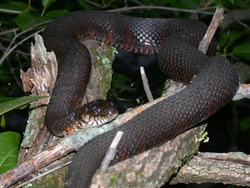 Northern Water-snake (Nerodia sipedon) lounging on branches overhanging a stream bank. These snakes have no venomous fangs, but do have a lot of tiny sharp teeth useful for holding onto slippery and wet prey. Their saliva has an anti-coagulant property, which makes a bite to your hand bleed more profusely than would be expected. Also, like many snakes, the Northern Water-snake exudes a foul-smelling musk secretion when handled. This stress-response is a defensive tactic.Below the surface of the water, beyond your reflection and glare of sunlight, there is a turf war of sorts going on. Once, during a lunch break for the group of summer campers I was leading, a slice of pepperoni chanced to fall into the river a few feet below the bridge we sat on. What ensued was a riveting 45-minute battle that we dubbed the “Crayfish-Pepperoni War”, where the relationship between territory, food supply, strategy, and luck played out. Like a rugby ball, the alien foodstuff was passed, stolen, and regained, and runners were mobbed by others competing for the high-fat prize! This event revealed another aspect of nature that usually goes unnoticed as we view the larger scenes of river life. Next time you pass by a pond or a stream, imagine all the drama of the open fields and know that there is an aquatic version taking place just below the surface.
Northern Water-snake (Nerodia sipedon) lounging on branches overhanging a stream bank. These snakes have no venomous fangs, but do have a lot of tiny sharp teeth useful for holding onto slippery and wet prey. Their saliva has an anti-coagulant property, which makes a bite to your hand bleed more profusely than would be expected. Also, like many snakes, the Northern Water-snake exudes a foul-smelling musk secretion when handled. This stress-response is a defensive tactic.Below the surface of the water, beyond your reflection and glare of sunlight, there is a turf war of sorts going on. Once, during a lunch break for the group of summer campers I was leading, a slice of pepperoni chanced to fall into the river a few feet below the bridge we sat on. What ensued was a riveting 45-minute battle that we dubbed the “Crayfish-Pepperoni War”, where the relationship between territory, food supply, strategy, and luck played out. Like a rugby ball, the alien foodstuff was passed, stolen, and regained, and runners were mobbed by others competing for the high-fat prize! This event revealed another aspect of nature that usually goes unnoticed as we view the larger scenes of river life. Next time you pass by a pond or a stream, imagine all the drama of the open fields and know that there is an aquatic version taking place just below the surface.
Under Cover of the Night
Allowing the dark beauty of the night to wrap itself around you is a unique and potent experience. Hearing the call of an Eastern Screech Owl while at home is quite different than hearing it while walking in the dark!
Many creatures are quite active, preferring the cover of darkness to give them a survival advantage. Also, it is in the evening that plants do their growing after a day of gathering energy. Few of us spend much time in nature after dark. If we do, the light of the campfire, flashlights, patio torches, or even the laughter and conversations we make, can imprison our senses. Our awareness of what goes on in the darkness around us is often dim. And while we may be winding down the day, the curtain goes up on the evening performance away in the fields, forests and meadows.
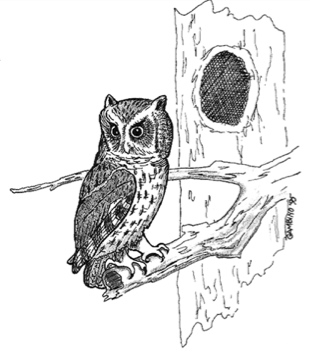 Should we choose to venture into the night woods, we might find that by allowing the eyes to adjust as the last glow of twilight fades, that there is still enough ambient light to see our way in the dark. It is then that we might glimpse the eerie, yet beautiful glow of foxfire along the trail, or the aerial dance of the lightening bug beetles. Looking carefully amongst the night-blooming flowers, such as honeysuckle and Evening Primrose, we may glimpse a Hawk moth zooming in for a drink of nectar, unaware that ferocious assassin or ambush bugs may lie in wait for their meal. Elsewhere, stalking through the grasses and leaves, a Praying Mantis may snack on ants marching in columns to a new nest site. The sounds of coyotes, owls, frogs, toads, whippoorwills, mosquitoes, crickets, and katydids make up the symphonic accompaniment to the vigorous dance of life on these warm summer nights.
Should we choose to venture into the night woods, we might find that by allowing the eyes to adjust as the last glow of twilight fades, that there is still enough ambient light to see our way in the dark. It is then that we might glimpse the eerie, yet beautiful glow of foxfire along the trail, or the aerial dance of the lightening bug beetles. Looking carefully amongst the night-blooming flowers, such as honeysuckle and Evening Primrose, we may glimpse a Hawk moth zooming in for a drink of nectar, unaware that ferocious assassin or ambush bugs may lie in wait for their meal. Elsewhere, stalking through the grasses and leaves, a Praying Mantis may snack on ants marching in columns to a new nest site. The sounds of coyotes, owls, frogs, toads, whippoorwills, mosquitoes, crickets, and katydids make up the symphonic accompaniment to the vigorous dance of life on these warm summer nights.
Dawn Brings a Changing of the Guard
The insects of fields and meadows, torpid from the chill air of early morning, cling to flowers and grasses heavy with dew, awaiting the first warm rays of the sun. Creatures of the night have returned to their homes, while a yawn and a stretch signals the start of a new cycle for some animals who prefer the light of day to ply their trade.
Much has transpired in nature since you and I last ate our breakfasts. The earth has rotated a full revolution, and brought the sun up in the east. Water vapor has condensed, soil nutrients and gases exchanged, sunlight converted to plant and animal tissue, flowers have bloomed, seeds were dispersed, the injured and weak have made their last track on earth and have made others strong by their flesh, and all is as it should be: at once terrible and beautiful. Hidden within the not-so lazy days of summer there is inspiration, mystery, and wisdom – gifts to us from nature – for all who slow down long enough to receive them.
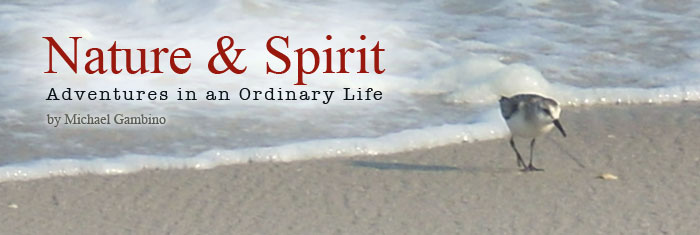
Reader Comments (2)
You're a poet! This is amazing!
I love the thought of those billion little hearts beating in symphony! Great shot of the spider. Thanks for the overview of summer's unfolding. (Where did you find that praying mantis? They are fascinating.)